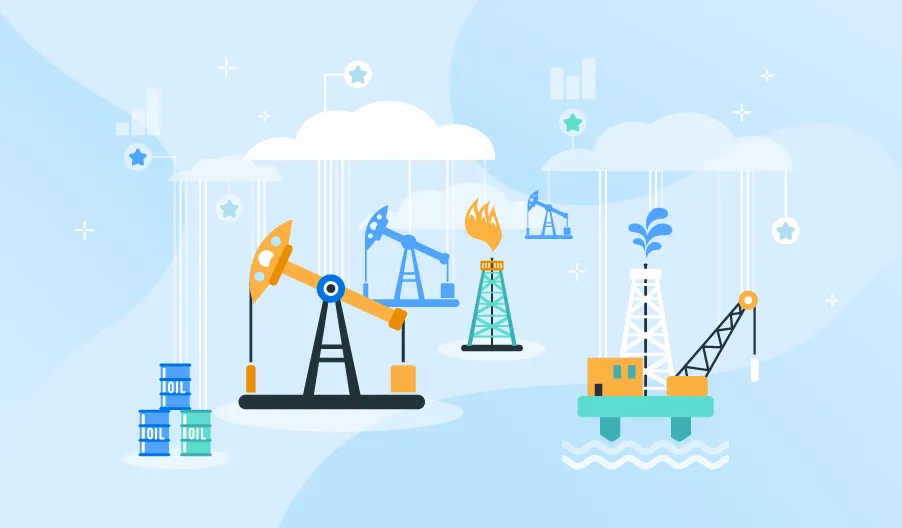In the complex world of oil trading, the revenue cycle is a critical aspect that drives profits for companies involved in this industry. It encompasses a series of stages that begin with the extraction of crude oil and end with the generation of revenue through trading activities. This article delves deep into the intricacies of the revenue cycle in oil trading, exploring the key players, processes, challenges, and future trends that shape this dynamic sector. The gateway to financial excellence; more details here to start your journey today and experience the magic of our incredible trading platform.
Exploring the Oil Trading Ecosystem
Key Players in the Oil Trading Market
The oil trading market is a multifaceted ecosystem with various stakeholders, including:
- Oil Producers: These companies or nations extract crude oil from reservoirs and serve as the primary source of supply in the market.
- Refineries: Refineries process crude oil into various petroleum products, such as gasoline, diesel, and jet fuel, before they are ready for consumption.
- Traders and Brokers: Traders and brokers play a pivotal role in connecting buyers and sellers in the market, facilitating transactions, and often taking speculative positions.
- End-Users: End-users include industries, transportation companies, and consumers who ultimately consume refined petroleum products.
The Role of Supply and Demand Dynamics
The oil trading market’s health relies heavily on the balance between supply and demand. Fluctuations in these factors can lead to price volatility and impact revenue generation.
Impact of Geopolitical Factors on Oil Trading
Geopolitical events, such as conflicts in oil-producing regions or changes in government policies, can significantly influence the oil trading landscape. Understanding and navigating these factors is crucial for traders.
Crude Oil Extraction and Transportation
1. Oil Reservoir Exploration and Drilling
The journey of oil from reservoir to revenue begins with exploration and drilling. Advanced technologies like seismic surveys and drilling rigs are employed to locate and extract crude oil reserves.
2. Extraction Methods and Technology
Different extraction methods, including primary, secondary, and tertiary recovery techniques, are used depending on the characteristics of the reservoir. Enhanced oil recovery methods are often employed to maximize extraction.
3. The Significance of Oil Pipelines and Tanker Shipping
Oil transportation is a critical phase, with pipelines and tanker shipping serving as the primary means of moving crude oil to refineries and markets. Infrastructure and logistics are essential considerations in this stage.
4. Environmental Considerations in Extraction and Transportation
The oil industry faces increasing scrutiny regarding its environmental impact. Sustainability and minimizing ecological harm are vital concerns, leading to advancements in cleaner extraction and transportation methods.
Oil Refining and Product Differentiation
1. Refinery Processes and Operations
Refineries process crude oil into a wide array of petroleum products, with distillation, cracking, and blending processes being fundamental to this stage.
2. Product Diversification in the Refining Stage
Refineries produce a range of products, from gasoline and diesel to petrochemicals and lubricants. Understanding market demands and optimizing product mix is crucial for revenue generation.
3. Quality Standards and Regulations in the Oil Industry
Stringent quality standards and regulations govern the production and sale of petroleum products. Compliance is essential to avoid penalties and maintain market reputation.
Trading Strategies and Risk Management
1. Understanding Oil Price Volatility
Oil prices are notoriously volatile, influenced by factors such as geopolitical events, supply and demand imbalances, and economic indicators. Traders must develop a deep understanding of price dynamics.
2. Spot vs. Futures Trading
Oil trading can occur in the spot market, where immediate delivery takes place, or in the futures market, involving contracts for future delivery. Choosing the right trading strategy is critical.
3. Hedging Strategies to Manage Risk
Given the volatility in oil prices, traders often employ hedging strategies to mitigate risk. Futures contracts and options can provide protection against adverse price movements.
4. The Role of Derivatives in Oil Trading
Derivative instruments, such as swaps and options, play a significant role in managing price risk and optimizing revenue generation strategies.
The Revenue Generation Process
1. Pricing Mechanisms in Oil Trading
Oil prices are determined by various pricing mechanisms, including benchmark crude prices (e.g., Brent and West Texas Intermediate) and regional differentials.
2. Revenue Generation Through Trading Margins
Traders profit by buying low and selling high, capturing the spread or margin between buying and selling prices. Understanding market trends and timing is essential for profitability.
3. Taxation and Regulatory Considerations
Oil trading involves complex tax structures and regulatory compliance. Understanding these aspects is crucial to avoid legal issues and optimize revenue.
4. Role of Financial Instruments and Credit Facilities
Access to credit and financial instruments is essential for oil trading companies to participate effectively in the market. Lines of credit, letters of credit, and trade finance are common tools used in the industry.
Challenges and Future Trends
Environmental Sustainability and the Energy Transition
The global shift towards renewable energy sources and the push for sustainability pose challenges and opportunities for the oil industry. Adapting to these changes is crucial for long-term viability.
Regulatory Changes and Compliance Challenges
Oil trading faces evolving regulatory landscapes, with increased scrutiny on transparency and anti-corruption measures. Compliance is essential to avoid legal and reputational risks.
Technological Innovations in Oil Trading
Advancements in data analytics, blockchain technology, and artificial intelligence are reshaping how oil trading is conducted, offering new ways to optimize revenue.
The Future Outlook for the Oil Trading Revenue Cycle
As the world’s energy needs evolve, the future of the oil trading revenue cycle remains uncertain. Adaptation and diversification may be key to maintaining profitability.
Conclusion
In conclusion, the intricate revenue cycle of the oil trading industry, spanning from extraction to revenue generation, underscores the importance of mastering each stage and adeptly navigating the challenges and opportunities within the ever-evolving energy sector. As the world grapples with shifting energy paradigms and growing environmental concerns, it is imperative for oil trading companies to exhibit adaptability and forward-thinking strategies. Amidst this transformative landscape emerges as an innovative solution, offering traders valuable tools and resources to streamline their operations and stay competitive in the market.





